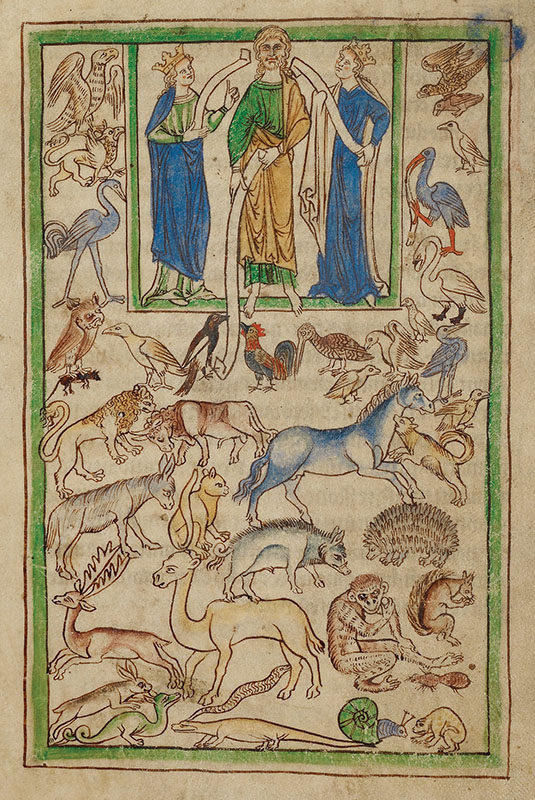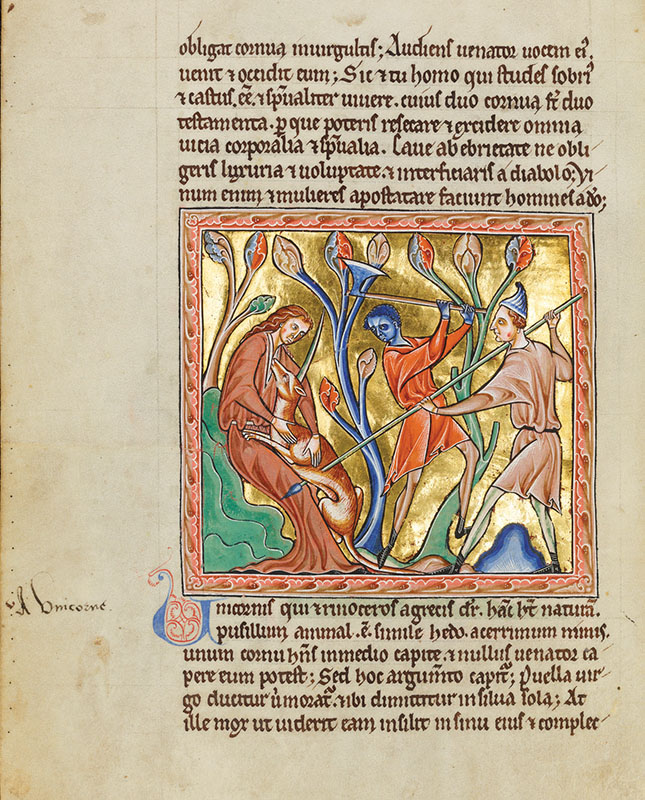Most of medieval Europe would have applauded that line from a sonnet by Gerard Manley Hopkins that proclaims: “The world is charged with the grandeur of God.” The planets, the skies, the waters, the plants, and, above all, the beasts of the field were thought to be infused with His divinity. In consequence, a corpus of literature, including books known as bestiaries, arose to satisfy a desire to understand God’s non-human creatures.

The Getty Museum has mounted an exhibition devoted to some of the most splendid of these volumes, Book of Beasts: The Bestiary in the Medieval World. Among these is the Ashmole Bestiary, from the Bodleian Library in Oxford, which depicts a unicorn that is attacked by two fierce men, only to find salvation in the arms of a virgin. In the Northumberland Bestiary of about 1250, from roughly a generation later, we find Adam naming all of the animals, among them monkeys and manticores, depicted in vivid outlines of pen and ink. Although these books were not intended as instruments of natural science—the concept did not exactly exist at the time—they did fire the imaginations of their contemporaries and eventually gave rise to more sustained inquires into their subjects, even as they inspired poets and artists into the Renaissance and beyond.

A work of recent art, Janet Macpherson’s Sit, Stand, Kneel, a mixed medium depiction of an owl standing on the back of a fox on the back of a fawn, has been included in the show, proving the enduring and persistent legacy of such fanciful imaginings.
Book of Beasts: The Bestiary in the Medieval World • Getty Center, Los Angeles • to August 18 • getty.edu
